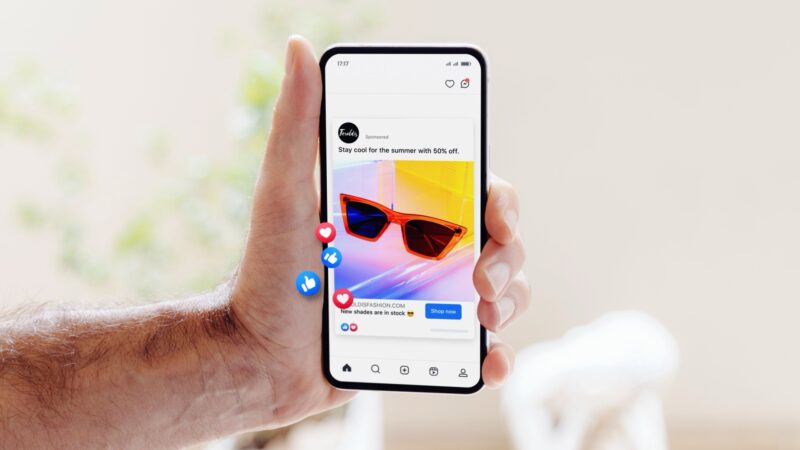
You’ve spent hours crafting the perfect ad — strong creative, sharp copy, precise targeting. But instead of conversions, you’re seeing sky-high CPMs, low CTRs and a budget that’s disappearing fast.
Paid social media ads don’t fail because of the algorithm. They fail because of fixable mistakes — weak creative, poor targeting and broken landing pages. In 2025’s attention economy, ads that don’t grab attention instantly don’t get a second chance.
The good news? These problems have fast fixes. Here’s how to identify what’s holding your ads back — and how to fix it now.
Issue 1: Your ad creative isn’t stopping the scroll
Your ad competes with endless distractions — friends’ posts, viral videos and breaking news. If it doesn’t grab attention in the first few seconds, it’s gone. (Gen Z users lose focus on ads in just 1.3 seconds.) CPMs go up, CTRs drop and conversions stall.
How to fix this issue
- Make it feel native: Strip away the corporate polish. Use raw, authentic content that matches what your audience already engages with. Grab your phone and film a quick product demo. Share a real customer unboxing. Repurpose organic content from your brand’s own feed. These perform better because they feel genuine.
- Create scroll-stopping hooks: Your first frame needs to hit hard. Lead with your strongest claim, most surprising stat or biggest pain point. Put your key message in the first three words of your copy. Use motion in the first frame — even a simple zoom can capture attention.
- Test multiple variations. Different formats work for different audiences. Run the same message across carousel, video and static formats to find what resonates. Also, try different aspect ratios — some placements perform better in 1:1, others in 4:5 or 9:16.
Pro tip: Open your lowest-performing ad and watch the first few seconds. If it doesn’t immediately demand attention, change the opening visuals, text, or hook.
Dig deeper: How to balance ROAS, brand safety and suitability in social media advertising
Issue 2: You’re targeting the wrong people
Your ad is live, but the results don’t make sense. Click-through rates are low, cost per acquisition is climbing and conversions are nowhere near expectations. The audience you thought would convert isn’t responding.
Broad targeting wastes ad spend by serving impressions to uninterested users, while hyper-niche targeting limits reach and increases CPMs. Neither guarantees results. The issue isn’t the size of your audience — it’s the intent signals you’re missing.
Behavior-based targeting is the key to finding the right people. Instead of relying on basic demographics or interests, focus on actions that indicate purchase intent.
How to fix this issue
Start broad, then refine. Algorithms are designed to learn. Give them room to work.
- Start with a larger audience instead of restricting targeting upfront.
- Let the platform optimize based on engagement signals like clicks, video views or form fills.
- Once the ad gathers enough data, analyze who’s engaging and narrow the audience based on high-intent behaviors.
Third-party targeting is unreliable. Your best audience is the one already engaging with your brand.
- Upload CRM lists to target existing leads and customers.
- Retarget website visitors who viewed a product but didn’t buy.
- Use engagement-based custom audiences — people who interact with your social content, watch videos, or click previous ads.
If your CTR is low, part of your budget is going to the wrong people.
- Check your audience insights to find who isn’t engaging.
- Exclude age groups, locations or behaviors that aren’t converting.
- If you’re running remarketing, exclude users who have already converted to avoid wasted spend.
Instead of guessing who might convert, let data guide your targeting.
- Build lookalike audiences based on your highest-value customers.
- Test different lookalike percentages — 1% for precision and 5% for scale.
- Combine lookalikes with behavior-based filters to refine targeting further.
Pro tip: Review your last campaign’s audience breakdown. Who engaged? Who didn’t? Adjust exclusions, refine targeting and test new lookalike audiences to improve results.
Issue 3: Your landing page is killing your conversions
Clicks aren’t the problem. People click your ad but aren’t taking the next step. If conversions are low despite solid CTRs, the issue isn’t the ad — it’s the landing page.
A slow, cluttered or confusing landing page kills momentum. If the post-click experience doesn’t match expectations, visitors leave. If the page loads too slowly, they never even see it. Every second of friction costs conversions.
How to fix this issue
Your post-click experience messaging needs consistency with your ad.
- Keep the headline identical to the ad’s promise. If your ad says “Get 50% off today,” the landing page should say the same thing — not a different discount or vague messaging.
- Use the same visuals from the ad to create a seamless transition.
- Ensure the CTA matches. The landing page should not encourage a paid signup if the ad offers a free trial.
The easier it is to convert, the better the results. So, simplify the conversion path.
- Reduce form fields. Ask for only what’s necessary. Long forms create drop-off.
- Remove distractions. Minimize navigation links, pop-ups and anything that pulls focus away from the CTA.
- Make the CTA impossible to miss. Buttons should be large, high-contrast and appear early on the page.
People won’t wait for a slow page. Almost 70% of consumers say page speed impacts their willingness to buy. If your landing page loads too slowly, visitors leave before seeing your offer.
- Run a Google PageSpeed Insights test and fix slow-loading elements like large images or unnecessary scripts.
- Enable lazy loading so images load only when they need to.
- Use a fast web host and a content delivery network (CDN) to improve performance.
Test different CTAs to see what wording resonates best.
- Instead of “Buy now,” test alternatives like “See how it works” or “Try it for free” — some audiences respond better to softer CTAs.
- Experiment with urgency-based phrases like “Limited Spots Available” to drive action.
- Test placement. While above-the-fold CTAs often perform better, some pages convert best when the CTA follows a benefits section.
Pro tip: Open your landing page and compare it to your ad. Does the messaging match? Is the CTA clear? Run a speed test to remove any extra friction blocking conversions.
How to identify when your campaign is healthy enough to increase ad spend
More ad spend doesn’t fix bad performance. Before increasing the budget, check these key signals:
- Your CTR is strong (1%+ for cold audiences, higher for retargeting). A low CTR means your creative or targeting still needs work.
- Your CPC is stable or decreasing. Rising CPCs suggest audience fatigue or poor ad relevance.
- Your landing page converts. If clicks are high but conversions are low, fix the landing experience before scaling.
- Your frequency is under 3. A high frequency means your audience has seen the ad too many times. Refresh the creative or expand your targeting.
- Your ROAS or CPA is within goal. If the cost per acquisition is too high, scaling will burn budget without results.
Once these indicators look solid, increase the budget in small increments (20–30%) and monitor performance. Sudden spikes can break optimization.
Dig deeper: IAB expects digital advertising growth to slow considerably this year
Test, optimize, win
The secret to fixing underperforming social ads isn’t increasing the budget. It’s eliminating what’s broken and optimizing what works.
Every failing campaign has a reason: creative that doesn’t grab attention, targeting that misses intent or a landing page that kills momentum. Fix those issues first. Scaling only works once your ads are converting efficiently.
Paid social ads aren’t a gamble when built strategically. The right creative, targeting and landing page make scaling possible. Test relentlessly, fix weak points fast and invest where the data proves success.
The post 3 reasons your paid social ads aren’t converting (and how to fix them) appeared first on MarTech.
